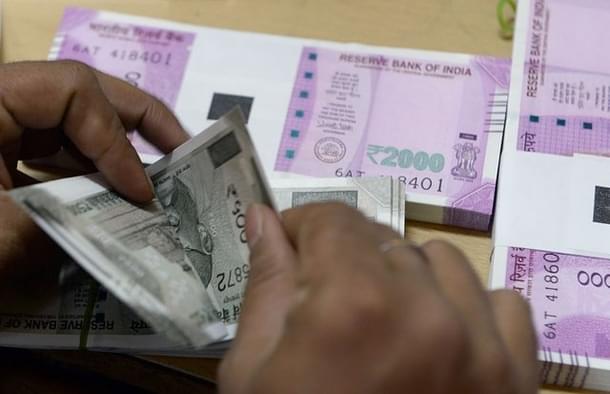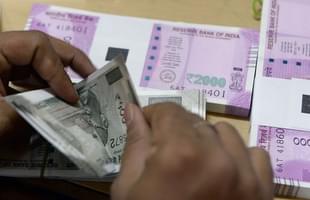Insta
Explained: CSO’s Latest Revision In GDP Numbers Shows That India Grew At 8.2 Per Cent In The Year Of Demonetisation
Swarajya Staff
Feb 02, 2019, 11:55 AM | Updated 11:55 AM IST
Save & read from anywhere!
Bookmark stories for easy access on any device or the Swarajya app.


Data released by Central Statistical Organisation (CSO) on Thursday (January 31) showed that Gross Domestic Product (GDP) of the Indian economy expanded at 7.2 per cent in 2017-18 and recorded an impressive 8.2 per cent acceleration in 2016-17. At 8.2 per cent growth, the year of demonetisation has now emerged as the fastest growing fiscal since 2010-11. The GDP growth rate for the year 2015-16 has been revised downwards to 8 per cent from earlier 8.2 per cent.
The Central Statistics Office (CSO), Ministry of Statistics and Programme Implementation, released the First Revised Estimates of National Income, Consumption Expenditure, Saving and Capital Formation for the financial year 2017-18, along with Second Revised Estimates for the financial year 2016-17 and Third Revised Estimates for the financial year 2015-16 (with Base Year 2011-12) as per the revision policy.
The following are the revised estimates provided by CSO.
- For 2017-18, as per the First Revised Estimate, GDP growth now stands at 7.2 per cent, compared to the 6.7 per cent estimated earlier.
- For 2016-17, the year demonetisation was announced, GDP growth has been revised higher to 8.2 per cent compared to the earlier estimate of 7.1 per cent. This is the Second Revised Estimate for this year.
- For 2015-16, GDP growth has seen an downward revision to 8 per cent in the Third Revised Estimate, from 8.2 per cent earlier.
The CSO provided the following reasons for revision in GVA/GDP for the three years
Year 2015-16
- Use of updated estimates of production and prices of some crops, livestock products, fish and forestry products.
- Use of final results of ASI: 2015-16 instead of provisional results.
- Use of updated information on local bodies and autonomous institutions.
Year 2016-17
- Use of updated estimates of production and prices of some crops, livestock products, fish and forestry products.
- Use of provisional results of ASI: 2016-17
- Replacement of Revised Estimates of different items of expenditure and receipts in the Central and State government budgets by Actuals
- Use of updated information on Local Bodies and Autonomous Institutions
- Use of updated MCA21 database received from the Ministry of Corporate Affairs Use of latest annual report of Public Sector Enterprises
- Use of latest data received for Cooperative Banks, NBFIs and financial auxiliaries from NABARD, NAFSCOB, MCA and SEBI.
SBI Group chief economic adviser, Soumya Kanti Ghosh, suggested that demonetisation probably resulted in cash being used for consumption.
Private Final Consumption Expenditure (PFCE) expanded at 8.2 per cent in FY17, but is supposed to have slowed down to 4.2 per cent in FY19. Such a surge in consumption expenditure in FY17 is possibly because of people possibly unlocking the cash and converting them into purchases. In essence, a large part of consumption was perhaps preloaded. With cash coming back into the system and remonetization now complete, people have now slowed down their consumption that perhaps was forced and preloaded when demonetization happened.
This hypothesis is further corroborated by the significant change in deflators across sectors in a contrarian manner. Thus, the most interesting aspect is the jump in agricultural sector deflator in FY17, pushing up the nominal agri growth to as much as 12.1 per cent in FY17 (rural sector is the most cash intensive). Since deflator can only change if the product weights changes, we believe post-demonetization, there might be a structural change in rural sector with more of allied activities being taken up. Interestingly, nominal agri GDP has declined to 7.0 per cent in FY18 and collapsed to 0.8 per cent (projected in FY19), with deflator at –1.3 per cent. Real Growth in agriculture also did jump in FY18, which could only be explained by the sudden shift.





